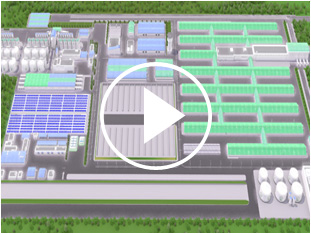Kvass production method implies the preparation the kvass wort, the preparation of the leaven by means of dilution of dry yeast, raw material fermentation using lactic-acid bacteria, kvass wort attenuation with yeast leaven, the adding of sugar-containing product in kvass preparing process, and the cooling of fermented wort. Milk whey is used as raw material for fermentation. Lactic acid bacteria of thermophilic kind are used.
Fermented milk whey and sugar-containing product are put into wort before putting the dilution of dry yeast. At the same time the latter are put at the temperature of fermentation after heating prepared kvass wort up to 95-100 °C for 20-50 minutes. Citric acid may be added into kvass wort. In addition, components for kvass wort are put only in case they contain solids in the cooled kvass wort before fermentation with 3,9-4,6 mass %. The method of raw material fermentation implies putting lactic acid bacteria in raw materials and the lactic acid fermentation. Milk whey is used as raw material for fermentation and thermophilic lactic acid bacteria are used as lactic acid bacteria. Lactic acid fermentation is made until the acidity value of sodium hydroxide reaches 15-25 sm3 with the concentration of 1 mole/dm3 per 100 sm3 of kvass. Then it is cleared and the appeared whey proteins are separated from the whey, followed by heating it and then boiling for not less than 20 minutes. Cottage cheese whey can be used instead of regular whey. Freeze-dried thermophilic bacteria can be used as thermophilic lactic bacteria at the optimal temperature of the fermentation of used bacteria at 42-43 °C. Whey clearing can be carried out by means of its heating up to 65-70 °C and holding at that temperature for 20-30 minutes in the presence of calcium chloride, and separation of whey proteins from the whey can be made by means of filtration using lavsan filter. This allows improving improve kvass persistency by limiting fermentation process, improving kvass taste as well as simplifying and accelerating kvass production technology and reducing its cost.









